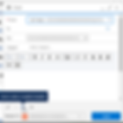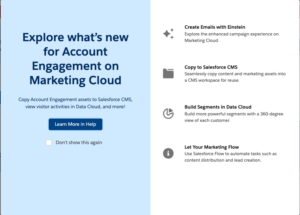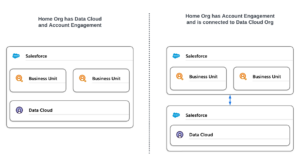Why won’t my Email Templates show up in Email Content in the Drag and Drop builder?
- August 30, 2023
- Pardot Email Templates, Unfettered Marketing

There has been a lot written and discussed about the new Account Engagement (f/k/a Pardot) Lightning Drag and Drop email builder and whether it’s a worthy successor to the classic builder in terms of functionality. One thing I’ve noticed in the past 18 months is there are two recurring common “gotcha” problems with developing and using email templates, and it’s so commonplace that it’s worth an article.
The Problem Defined:
You build an email template and then when you go to Email Content to use it, does not show up as an option. Why?
If you didn’t build the template, it’s possibly a folder permissions issue– you must have shared access to the Salesforce folder that the template is in to be able to use anything in it. However, that’s not typically the problem, because I often see this happening to the people who made the templates.
The issue arises from the misuse of two field elements in the template that aren’t well understood, so let’s look at them and explain. They are the Related Entity Type and “Contains Salesforce Files”

What is Related Entity Type?
When you create a new template, related entity type is an optional field and you will see that it contains lots of different choices of all sorts of different salesforce objects. This is because you can use the template builder to make a template to send an email from nearly any object in Salesforce from the email activity tab, not just Account Engagement.

The image here shows how you can insert a template to send from the opportunity object using the insert, create, or update template button on the email interface– this is the same set of templates that you can build using the drag and drop builder. So if you wanted to build a template that your salesperson could send as a one-off email from the opportunity object you would choose related entity type of opportunity. What this does is make the merge fields for an opportunity available to use in the template.
Now for the purposes of building an Account Engagement template, the related entity type can only be one of three things: Blank (none), Lead or Contact. If it’s anything else, the template will not appear if you try to create a record in Email Content.
The related entity type can only be Blank, Lead or Contact to create an Account Engagement Email
One that I’ve also seen is people pick in related entity type is “List Email”. This seems intuitive, but’s also wrong. List Email is not the List Email in Account Engagement, it’s the feature that was formerly called “Mass Email” in Sales Cloud. See this article for a discussion of the two “List Emails”.
What does Contains Salesforce Files Mean?

The Contains Salesforce Files checkbox is automatically selected when any element in the template comes from the Salesforce Files repository and not the CMS library or an external source. Often this is the result of picking a Salesforce file to use as an image in the email template. This might be perfectly fine if the template is being used for some other object as we previously discussed, but Account Engagement won’t allow it. As you can see from the dialog from the Email Builder, it’s super easy to just select add image from files because it’s right there, but don’t do it. Any image you use in your template must come either from the Salesforce CMS that was set up to host images for the builder, from the Account Engagement files (just add the URL manually), or an external public source such as your website (again, just enter manually). If you accidentally use a Salesforce file in your template, it will check that box when you save it, and again, if that box is checked, Email Content will not show you that template as an option.
If “Contains Salesforce Files” is checked in the template, Email Content will not allow you to use the template
Those two simple things have caused people a lot of headache and wasted time. Hopefully this article has been helpful to either diagnose or prevent this issue with your Email Content and the Account Engagement Lightning Email Builder. Also see my article on how to create custom List Views for Email Content.
This Pardot article written by: Bill Fetter
Unfettered Marketing
A collection of random thoughts on how people, places and things in our fascinating world connect to sales and marketing, and what we can learn from it.
Original Pardot Article: https://www.unfetteredmarketing.com/post/why-won-t-my-email-templates-show-up-in-email-content-in-the-drag-and-drop-builder
Find more great Pardot articles at https://www.unfetteredmarketing.com/blog
Pardot Experts Blog
We have categorized all the different Pardot articles by topics.
Pardot Topic Categories
- Account Based Marketing (ABM) (7)
- Business Units (14)
- ChatGPT / AI (3)
- Completion Actions (5)
- Connectors (10)
- Custom Redirects (4)
- Data Cloud (3)
- Demand Generation (8)
- Dynamic Content (7)
- Einstein Features (11)
- Email Delivery (17)
- Email Open Rates (3)
- Pardot A/B Testing (2)
- Email Mailability (16)
- Do Not Email (1)
- Double Opt-in (2)
- Opt Out / Unsubscribe (14)
- Email Preferences Page (6)
- Engagement Studio (16)
- Industries (1)
- Non Profit (1)
- Landing Pages (9)
- Lead Generation (1)
- Lead Management (13)
- Lead Routing (3)
- Lead Scoring (16)
- Leads (3)
- Marketing Analytics – B2BMA (9)
- Marketing Automation (1)
- Marketing Cloud (3)
- Marketing Cloud Account Engagement (4)
- Marketing Cloud Growth (2)
- New Pardot Features (6)
- Opportunities (2)
- Optimization (2)
- Pardot Admin (65)
- Duplicates (1)
- Marketing Ops (1)
- Pardot Alerts (1)
- Pardot API (2)
- Pardot Automations (3)
- Pardot Careers (12)
- Pardot Certifications (4)
- Pardot Consulting (1)
- Pardot Cookies (4)
- Pardot Custom Objects (3)
- Pardot Email Builder (8)
- Pardot Email Templates (10)
- HML (6)
- Pardot Events (17)
- Pardot External Actions (1)
- Pardot External Activities (4)
- Pardot Forms (29)
- Form Handlers (8)
- Pardot Integrations (21)
- Data Cloud (2)
- Slack (1)
- Pardot Lead Grading (5)
- Pardot Lead Source (2)
- Pardot Lightning (1)
- Pardot Migration (1)
- Pardot Nurture / Drip Campaigns (2)
- Pardot Personalization (3)
- Pardot Profiles (1)
- Pardot Releases (18)
- Pardot Sandboxes (2)
- Pardot Segmentation (5)
- Pardot Strategy (7)
- Pardot Sync (2)
- Pardot Sync Errors (1)
- Pardot Tracker Domains (5)
- Pardot Training (3)
- Pardot Vs Other MAPs (4)
- Pardot Website Tracking (2)
- Reporting (22)
- Salesforce and Pardot (31)
- Marketing Data Sharing (2)
- Pardot Users (3)
- Salesforce Automation (5)
- Salesforce Flows (2)
- Salesforce Campaigns (22)
- Salesforce CRM (3)
- Record Types (1)
- Salesforce Engage (3)
- Salesforce Queues (2)
- Security and Privacy (1)
- Tags (3)
- The Authors (540)
- Cheshire Impact (9)
- Greenkey Digital (55)
- Invado Solutions (37)
- Jenna Molby (9)
- Marcloud Consulting (6)
- Nebula Consulting (67)
- Pardot Geeks (44)
- Salesforce Ben | The Drip (242)
- SalesLabX (16)
- Slalom (4)
- Unfettered Marketing (51)
- Uncategorized (1)
- Website Tracking (2)
- Website Search (1)
More Pardot Articles
See all posts
This Pardot article written by: Bill Fetter
Unfettered Marketing
A collection of random thoughts on how people, places and things in our fascinating world connect to sales and marketing, and what we can learn from it.
Original Pardot Article: https://www.unfetteredmarketing.com/post/why-won-t-my-email-templates-show-up-in-email-content-in-the-drag-and-drop-builder
Find more great Pardot articles at https://www.unfetteredmarketing.com/blog






